Choosing a pouching system
By Mary Lou Boyer, BS Ed, RN, ET, WOC Nurse Specialist
While an ostomy nurse is best prepared to determine the optimal ostomy pouching system for you and your particular needs, this information is made available to you by Miami Ostomy Aftercare Program (MOAP) to help you understand the different types of ostomy pouching systems that are available. Having information about the many options, as well as the possible advantages and disadvantages of certain options, will be helpful if you do not have an ostomy nurse, or if you are ready to experiment in finding the pouching system that is most comfortable for you and best fits your lifestyle.
Pouching Systems
Ostomy care has changed and improved in so many ways over the years. The first pouches developed were heavy and bulky,needing heavy-duty adhesives to keep the seal from leaking. Seeing the need for better alternatives, ostomy product manufacturers made remarkable advances to improve pouch quality and options. In the meantime, innovativepatients developed products to solve their own problems with self-care. Some of thoseare now widely accepted and are helping others. Research, new technologies, and patient needs combineto drive manufacturers to continually improve existing productsandadd new options.
When you first begin to use ostomy supplies, you will find that there are many different types of pouches, sometimes called ostomy bags or ostomy appliances. Having so many different types can be confusing, but having options allows you to find the one that is most comfortable and workable for you.
Choosing the ostomy pouching system that is best for you depends on several different factors:
- Type of ostomy
- Skin condition
- Abdominal contour or shape of the abdomen
- Daily activities
- Lifestyle
- Personal preferences
It may take a while to figure out what is best for you. The important thing is that your pouching system provides a dependable seal on your abdomen with a predictable wear time. This means that you have a seal that does not leak and that you can get an expected number of days between changes.
At the very beginning, when you first have your ostomy surgery, the post-op pouch will be transparent and drainable. This makes it possible for medical staff to check the color, size and function of your new stoma, as well as measure output. A transparent pouch is very helpful when you are first learning how to care for your ostomy because it allows you,or your caregiver,to see more clearly where to place the pouch over the stoma and onto your abdomen. Later you will be able to choose an opaque pouch if that is the type you prefer.
The system you start out with may need to be adjusted several times until you have a predictable wear time. This is because there are changes taking place as your body heals. Keep in mind that the stoma will be swollen and your abdomen will be distended. That means the size of the pouch opening will need to be adjusted as the swelling goes down and your abdominal contour will change during the healing process.
Here is some information about each option:
-
One-Piece Ostomy Pouch
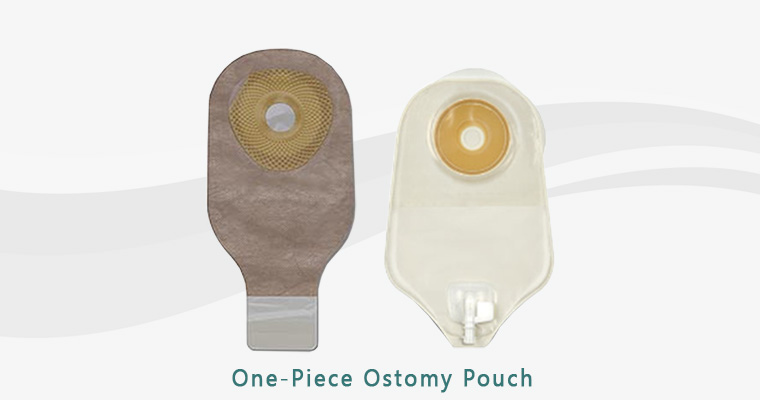
The plastic pouch portion is fused (built in) to the adhesive wafer portion that sticks to your skin. You cannot separate the pouch from the wafer.
Advantages
- Simple, easy to use
- More flexible than 2-piece systems (especially helpful with rounded abdomen)
- Low profile, more discrete under clothing
- Fewer supplies to order and organize
- Less bulky for storage or packing for travel
- Fewer steps and therefore less time consuming to change appliance
- Often used for patients with manual dexterity problems
Disadvantages
- Unable to reposition or rotate the angle of the pouch once applied
- Possible shorter wear time because of thinner wafer portion that keeps it flexible
- “Burping” the pouch to release gas can only be done by opening the bottom tail closure
- If you want to switch the type of pouch for certain activities (i.e., long to short or transparent to opaque), you must change the whole system
Two-Piece Ostomy Pouch
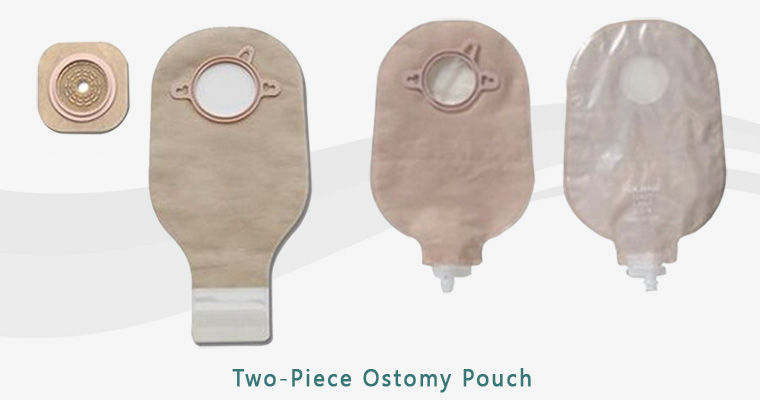
There are two separate parts to this system; a wafer or flange (the part that sticks to the skin) and a pouch.
Advantages
- Can apply the wafer to your skin before connectingthe pouch, allowing better view for fitting around the stoma
- Can change the pouch portion without removing the wafer (some people prefer a longer pouch at night and a shorter one for intimacy or certain activities, such as running or swimming)
- “Burping” the pouch to release gas can be done by separating the pouch from the wafer a little at the upper area
- Wear time may be longer as the two-piece wafer is a little thicker
Disadvantages
- Higher profile, bulkier than one-piece pouch and possibly more noticeable under clothing
- Additional number of supplies to order and manage
- Pouch and flange (wafer) can come apart and cause leaks if not properly attached
- More steps and therefore may be more time consuming to change appliance
- More rigid than one-piece pouch
- Does not conform as much to rounded abdomen or herniated area as flexible one-piece does
-
Transparent Pouch a pouch that you can see through to view the stoma and contents
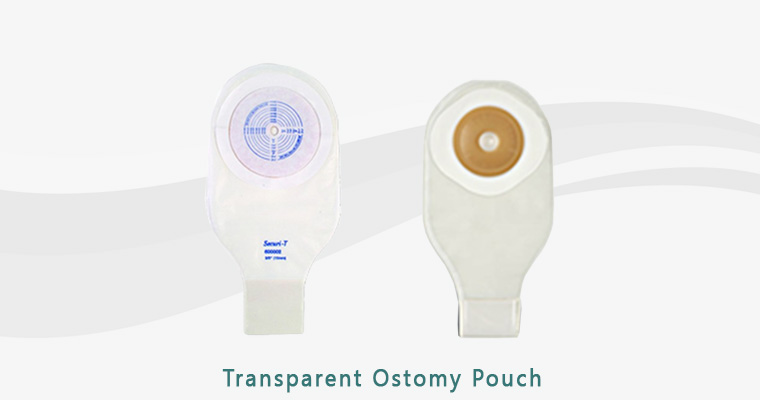
Advantages
- Makes it possible for medical staff to check the color, size and function of your new stoma
- Allows you or a caregiver to see the stoma as pouch is applied
- Allows you to see the contents of the pouch
- Best for Doctor visits so the stoma and contents are visible
- Seeing contents can help a person to become aware of how well you are chewing your food or if a medication has not dissolved
Disadvantages
- Stoma is visible and pouch content is visible
- Some people prefer not to see the stoma or contents of the pouch
Opaque Pouch a pouch that you cannot see through
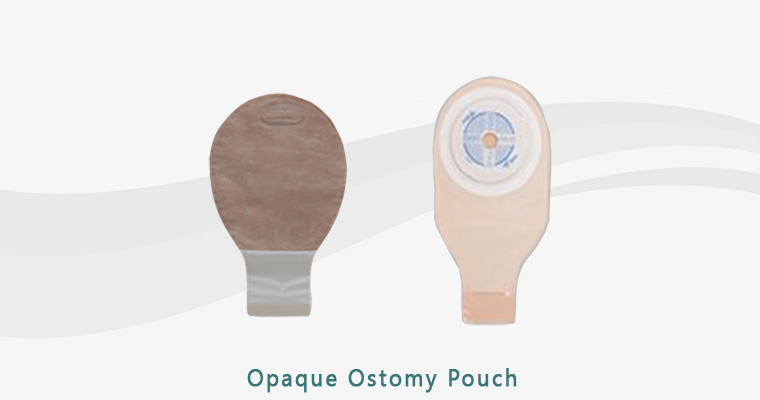
Advantages
- More discrete as the stoma and contents of the pouch are not visible
- Aesthetically more pleasing
- Usually flesh color, light or dark beige
Disadvantages
- Difficult to see to apply pouch over stoma if using 1-piece pouch
- Must remove pouch to see stoma
-
Drainable Pouches have an opening at the bottom to drain the pouch contents. Drainable pouches are best for ileostomies or colostomies with more frequent discharge/output from the stoma throughout the day. The opening will have a secure closure such as a clamp, clip or integrated (Velcro-type)closure, or a drain spout/tap as needed for a urostomy.This way the pouch can be emptied as needed and used for several days. Theyare available in both one and two-piece systems. Pouches designed for urostomies have specialized drainage taps/valves for emptying.
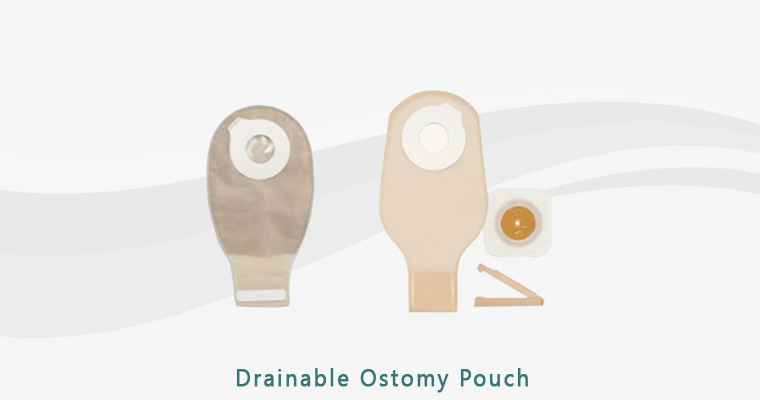
Advantages
- Drainable pouches are normally used for urostomy and ileostomy due to liquid content and frequency of emptying.
- There are several options for closure of drainable pouches so you can choose the one that works best for you.
- Fewer pouches are used because you do not have to remove the pouch to empty it.
- A drainable pouch can be used for several days before it would have to be thrown away.
Disadvantages
- Must be able to use a pouch clip/clamp or fold the integrated closure (Velcro-type)
- May be difficult to empty if your output is very thick or formed
- May be difficult for patients with poor manual dexterity to use a clip or integrated closure for emptying
- Can be time-consuming to empty, wipe and clean pouch opening before closing clamp or integrated closure
- May be some odor if the pouch closure area is not wiped clean after each time it is emptied
Closed-End Pouches
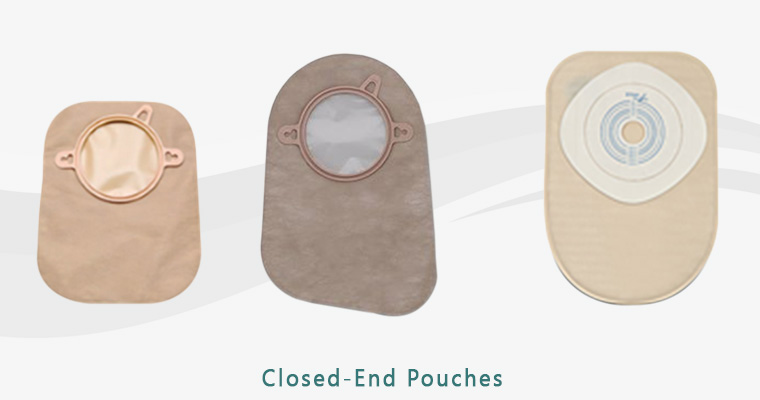
There is no opening at the bottom to empty this type of pouch. They are designed for one-time use only, and are meant to be removed and disposed of once they are ½ - ¾ full and a new one applied. Closed-end pouches are available in both one and two-piece systems. They are intended to be usedfor very thick or formed stool output and when the amount of stool is small enough that the pouch would only have to be changed once or twice a day.
Advantages
- The pouch is detached and thrown away when almost full, which usually takes less time than emptying a drainable pouch
- Most insurance allow 60 closed-end pouches a month or two a day.
- Small or mini closed-end pouches are often preferred for sports activities, swimming or intimacy as they are more discrete and less bulky
- There is no chance of seepage, or odors leaking from the bottom of the ostomy pouch because it is completely sealed
- Some people find it easy to change the pouch and dispose in public bathrooms or a friend’s house as the steps are quicker with no draining involved. (the pouch is taken off, clean around the stoma and wafer opening, and then attach the fresh pouch)
Disadvantages
- Cannot be emptied or reused
- Since the pouch is discarded, more product is used than if you use a drainable pouch. (Usually these are changed out once or twice a day, but the frequency is based on individual need and your healthcare professional's recommendations)
- Changing a one-piece closed-end pouch more than once or twice a day can lead to skin irritation
- Not practical for liquid output
- People with ileostomy or urostomy are generally discouraged from using closed-end pouches because their output is almost constant.
- Since this type of pouch is changed and discarded in the trash even when away from home, this is something to consider when it comes to disposing of the pouch at work or when visiting friends.
- Replacement pouch must always be kept with you
- Some people find it difficult to dispose of when in public bathroom (always put used pouch in a discrete plastic bag before discarding in the trash)
-
The opening of your pouch barrier should fit comfortably around the stoma so it is not rubbing or pressing on the stoma; however at the same time,the opening should notleave any skin showing around the stoma. This minimizes the risk skin damage or irritation. There are several methods of preparing the pouch opening.
Cut-To-Fit
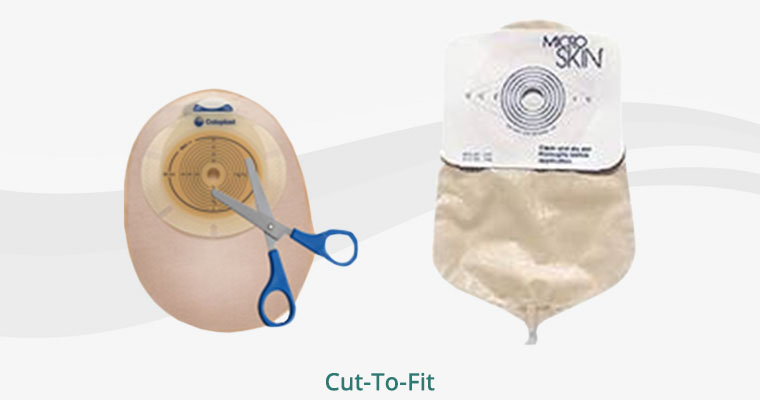
A cut-to-fit barrier needs to be cut to the correct size opening in the skin barrier before it is applied to the body. There is usually a small starter hole in the center of the skin barrier where scissors can be placed to start cutting to the right size.
Advantages
- Opening can be cut to suit the needed size
- A cut-to-fit barrier is ideal if the stoma is still changing sizes during the post-op period
- If the shape of the stoma is not round, this type of barrier can be cut to any shape
Disadvantages
- Need to use scissors to cut (Curved scissors work best for cutting the circle opening)
- Can be difficult for some people to cut
- More time consuming to prepare for pouch change
Moldable
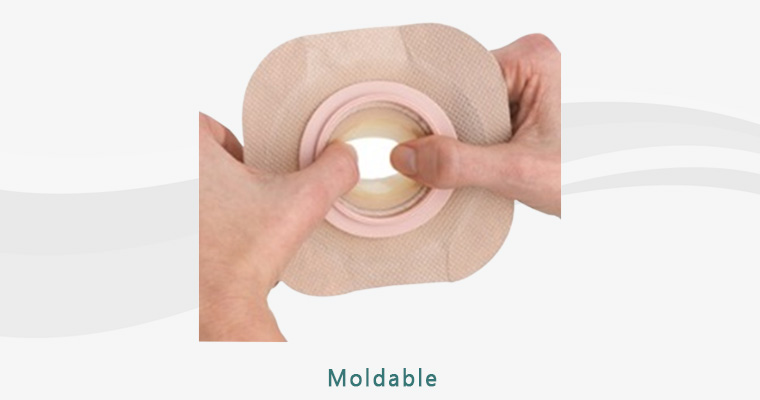
The wafer material is rolled from the center opening to the correct size and shape of the stoma. Once rolled, it is pressed down to keep it from unrolling back to the original position.
Advantages
- Accommodates any stoma size or shape
- Personalized Fit
- No scissors needed
Disadvantages
- May be difficult for people with poor manual dexterity
Pre-Cut
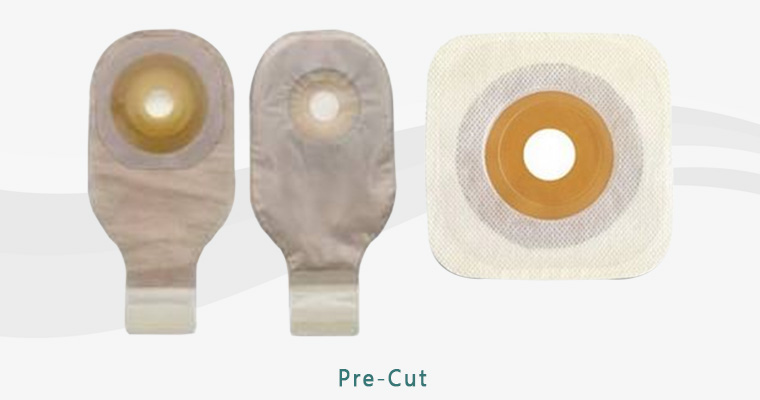
The opening in the pouch barrier is already cut to the size of the stoma by the manufacturer. This type of pouch or wafer is purchased by the size of the opening.
Advantages
- Easy to apply
- Takes less time to prepare for application because the cutting is already done
- Best for stomas that have an evenly round shape
Disadvantages
- If your stoma size falls between manufactured sizes, it may not fit exactly to protect your skinsince the pouch opening is already cut
- If the stoma changes size, the correct size needs to be ordered
- Less adaptable to stoma shapes otherthan round
Finding the most appropriate ostomy pouching system may take some time since there are so many types. Ostomy appliance manufacturers can provide samples of different types of barriers, wafers pouches and other products for ostomy care. They can be contacted through their web sites, by email and by phone. Having samples is a tremendous help as you will be able to try a variety of options as you and your nurse sort out which is most appropriate for you and your lifestyle.
It is best to make small changes, one at a time while you are trying out different options. Unless your current system is causing problems, it is most helpful to test a new ostomy product when your skin is healthy and when you can be close to home. This way you will be able to take care of any problems if anything goes wrong or if it is uncomfortable. Try to experiment with each new product more than once in order to make sure you have used it correctly and to be certain whether it does or does not meet your needs.
The average wear time is 3-4 days, but some people get only one or two days, while others may wear their pouch for a week without experiencing skin problems or leaks. Starting out, it is best if you can make your changes every 3 days. If that goes well and you have no leaks or skin problems, you can then extend for an additional day. Do this for a while before extending again another day. Do not try to get so many days wear time that you end up making your pouch changes just when leaking occurs. Changing on a more regular scheduled basis helps prevent skin problems and prevents disrupting activities from an embarrassing leakage. Remember the main goal is to use a pouching system that does not leak and you can get an expected number of days so you are not having to change at random times. At the same time you can choose options that help make your daily routine a little easier and that best adapt to your everyday activities and lifestyle.